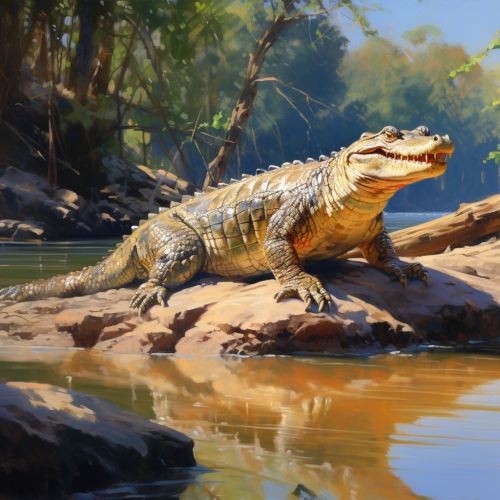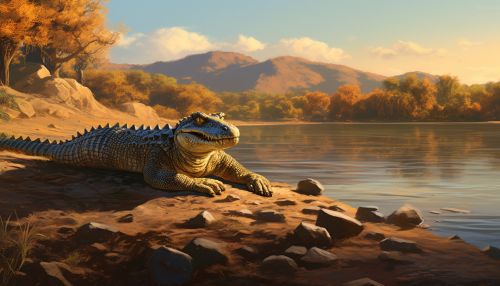Crocodile
Taxonomy and Evolution
Crocodiles belong to the order Crocodilia, which also includes alligators, gharials, and caimans. This order is part of the larger group known as Archosauria, which also includes birds and extinct dinosaurs. Crocodiles are considered true crocodiles, and they belong to the family Crocodylidae.


The evolution of crocodiles began over 240 million years ago in the Mesozoic Era. They evolved from archosaurs, a group of reptiles that also gave rise to dinosaurs and birds. The first true crocodiles appeared about 83.5 million years ago in the Late Cretaceous period.
Physical Characteristics
Crocodiles are large aquatic reptiles with a streamlined body that allows for swift movement in water. They have a long, V-shaped snout, unlike the U-shaped snout of an alligator. The fourth tooth on each side of the lower jaw of a crocodile sticks up over the upper lip, making it visible when the mouth is closed.
Crocodiles have a powerful tail that they use for propulsion and defense. Their skin is thick and covered in non-overlapping scales. They have nictitating membranes to protect their eyes and their ears are slits located on the sides of their head. Crocodiles also have a very powerful bite force, which is used to capture and hold onto their prey.
Habitat and Distribution
Crocodiles are found in the tropical regions of Africa, Asia, the Americas, and Australia. They inhabit a variety of freshwater habitats such as rivers, lakes, wetlands, and sometimes in brackish water. Some species, like the saltwater crocodile, can live in seawater but they are still dependent on freshwater systems for their survival.
Diet and Hunting
Crocodiles are carnivorous, feeding on a variety of animals such as fish, reptiles, birds, and mammals. They are ambush predators, waiting for their prey to come close before launching a sudden attack. Crocodiles use their powerful jaws to grab their prey and drag it underwater until it drowns.
Reproduction and Lifespan
Crocodiles are oviparous, laying eggs in a nest. The female guards the nest and helps the hatchlings to water once they emerge. The sex of the hatchlings is determined by the temperature of the nest, a characteristic known as temperature-dependent sex determination.
Crocodiles have a long lifespan, with some individuals reaching over 70 years of age in the wild. They grow throughout their lives, with older individuals being larger than younger ones.
Conservation
Many species of crocodiles are at risk due to habitat loss, illegal hunting, and pollution. Conservation efforts include habitat protection, farming for sustainable use, and law enforcement to protect wild populations.
